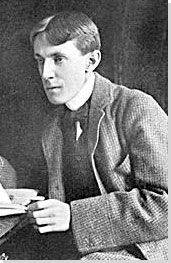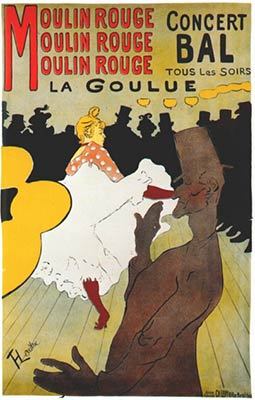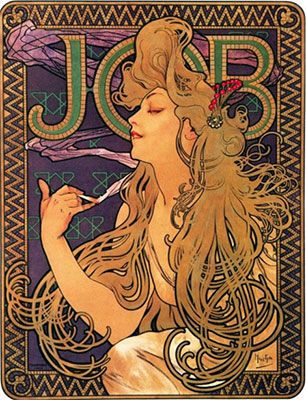Summary of Aubrey Beardsley
Aubrey Beardsley's artistic career was remarkably impactful for its brevity. In the seven years he was able to draw and write before succumbing to tuberculosis, Beardsley developed a reputation as one of the most controversial artists of his time. The linear elegance of his designs coupled with the artist's bizarre sense of humor and fascination with the grotesque and taboo simultaneously intrigued and repelled his Victorian audience. His illustrations comprised characteristics of Aestheticism, Decadence, Symbolism, and, most apparently, Art Nouveau. Beardsley's block prints allowed his work to be easily reproduced and widely circulated. The diabolic beauty of his work and its overwhelming presence in English publishing houses meant that Beardsley quickly became the most influential draftsman of his time.
Accomplishments
- More than mere illustrations, Beardsley's images captured the mood of the accompanying text, while aggressively critiquing repressive Victorian concepts of sexuality, beauty, gender roles, and consumerism.
- Beardsley's poster art and essay, "The Art of the Hoarding" (1894) changed how the public thought about art and advertising. The two, according to the artist, were not mutually exclusive. His theatre posters manifested his theory and helped revolutionize poster production in Europe and America.
- Beardsley borrowed aspects from various artistic movements and adapted them to suit his own purposes. He appropriated the Decadent themes of decay, death, and eroticism to shock viewers out of their complacency; while his delicately interlacing forms and sinuous arabesque lines make his work important in marking the visual shift from the Aesthetic movement to the modern Art Nouveau style.
- In addition to his illustrations, Beardsley also composed poems and prose. His later writings were as Decadent as his pictures. Beardsley is best known for Under the Hill, an unfinished erotic novel about Venus and Tannhauser, for which he created the text as well as the accompanying illustrations.
Important Art by Aubrey Beardsley
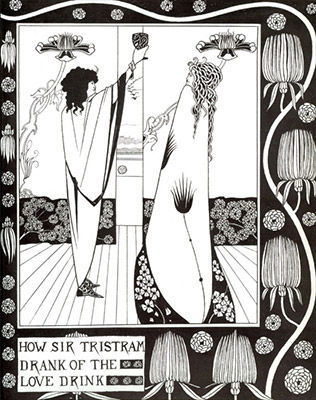
How Sir Tristram Drank of the Love Drink
Produced for Thomas Malory's Le Morte D'Arthur, this illustration was one of many that helped tell the author's interpretation of the story of King Arthur, so beloved by the Pre-Raphaelites. The image refers to Tristram and Isolde's doomed love story, which predates and likely influenced the romantic tale of Lancelot and Guinevere. Beardsley depicts the couple as androgynous figures separated by a decorative pillar that bifurcates the composition. The flowers within the picture framing and adorning its border seem ready to burst, suggesting fertile ripeness or perhaps foretelling the blossoming of something more sinister.
Although the book was considered only moderately successful at the time, it has since been dubbed Beardsley's first masterpiece and is credited with popularizing his unique early style that blended a simplified interpretation of textile designer William Morris's medieval floral patterns, Pre-Raphaelite romance, and the darker Decadent themes of sex and death. This drawing is not only an early example of the intersection of the Arts and Crafts movement and Art Nouveau; it was also a social critique. Beardsley's androgynous figures challenged established Victorian gender roles and traditional concepts of sexuality. His illustrations for Le Morte D'Arthur were the last created in his early style and were followed by his mature work in which the influence of the Japanese aesthetic is more evident.
Illustrated Book
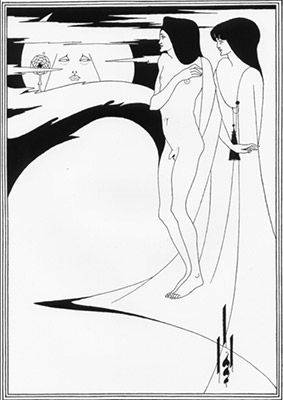
The Woman in the Moon, Frontispiece for Salomé
This work was created for Salomé, Oscar Wilde's book based on his own play. Inspired by the murderous biblical femme fatale who killed John the Baptist, Wilde's Salomé was condemned as blasphemous. Beardsley's illustrations took this offense to a new level, poking fun not only at repressive Victorian society, but also at the posturing of Wilde himself. Here, a naked man (Page of Herodias) stands protectively in front of a robed man (Narraboth) and gazes apprehensively at the moon on the horizon. In Wilde's rendition of Salomé, both characters fall victim to unrequited love. The Page loves Narraboth; while Narraboth loves Salomé. Standing on Narraboth's robe, the Page attempts to shield them both from the gaze of the moon. In the text, Wilde alludes to the magical power of the moon to hold sway over human moods. Beardsley plays with this idea by depicting the (wo)man in the Moon as the author, Oscar Wilde, who indeed literally controls his characters. The cartoon moon-face seems fat and droopy, similar to other mocking portraits Beardsley created of Wilde that poked fun at his pretensions.
Beardsley has been accused of composing drawings for Salomé that were unrelated to the actual text, but this is not the case. Adopting the Symbolist principle of representing rather than showing something, Beardsley worked to convey a distinct mood or progressive idea related to Wilde's text. By inserting the Page and Narraboth into the frontispiece, a space traditionally reserved for representing the general theme of a text, Beardsley highlights the homosexual passions alluded to throughout the book. The moon's association with Wilde, whose sexual preference was well known, and the inclusion of a carnation left of the moon, worn as an indication of homosexuality at the time, further underscores this theme of same-sex passions, abhorred by conservative Victorian society. In true Symbolist form, Beardsley created illustrations that addressed key social issues beyond Wilde's book. In this sense, the artist accomplished more than merely realizing the text through pictures, as other illustrators did. He used this platform to critique repressive Victorian values.
Line block print on Japanese Vellum - Victoria and Albert Museum, London

The Peacock Skirt
Created by Beardsley for Oscar Wilde's Salomé (1894), this illustration shows the protagonist wrapped in a long, flowing garment embroidered with designs reminiscent of peacock feathers. Indeed a peacock hovers at the left while Salomé looms threateningly over the young man so enamoured of her, as though posed to seduce and devour him. Effeminately rendered, the man's legs visible beneath his cloak belie his gender. This image appears in the book alongside seemingly unrelated text: soldiers discuss noise emitting from a banquet hall; while the young man describes Salomé's beauty.
In many of his illustrations for Salomé, Beardsley challenges Victorian concepts of sexuality and gender roles. But the modern notion of the "New Woman" is perhaps most clearly evident in The Peacock Skirt. Contrary to the Victorian notion of the passive and subordinate female, here Beardsley depicts Salomé as self-possessed, sexually charged, and, most appallingly, dominant. The title of the drawing and the peacock decor may be in reference to dialogue in the following pages in which Herod offers Salomé a gift of peacocks. This not withstanding, Beardsley's rendering is most certainly influenced by James Abbott McNeill Whistler's Peacock Room, which the artist so greatly admired. Indicative of Beardsley's mature style, this image speaks to the artist's fascination with the Japanese aesthetic - an interest he shared with Whistler and other late-19th-century painters. This characteristic combined with flowing, arabesque lines, strict two-dimensionality, and decorative patterns, make The Peacock Skirt a superb example of early Art Nouveau.
Line black print on Japanese vellum - Victorian and Albert Museum, London
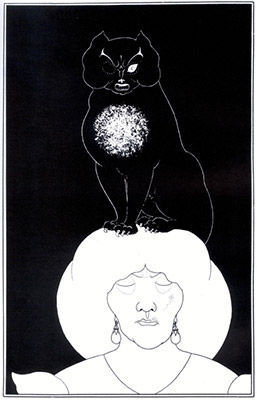
The Black Cat
Beardsley produced this illustration for one of Edgar Allan Poe's darkest tales by the same name. Poe was an important literary figure for Symbolist and Decadents artists fascinated with ghoulish, gothic tales. In Poe's The Black Cat (1893) a cat, having been cruelly mistreated by its owner, the narrator, retaliates by biting him. Enraged, its owner gouges out its eye and eventually hangs his pet. When he comes across a similarly colored cat, pictured here by Beardsley, the narrator becomes agitated and, in a fit of rage, accidentally kills his wife instead of his intended target. He conceals his wife behind a cellar wall, unknowingly trapping the cat there as well. Police locate the body of his wife only upon hearing the cat, perched atop the deceased's head, wailing loudly from behind a brick wall. Beardsley's strikingly distilled design complements the dark content. Thin, sinuous lines delineate the elegant creature from the darkness surrounding it. Beardsley accentuates the cat's sharp claw and accusing eye that so haunted the narrator as a living reminder of his abusiveness. Poe referred to the black cat, forever at his heels as, "an incarnate nightmare that I had no power to shake off - incumbent eternally upon my heart!"
A quintessential example of Beardsley's early style, The Black Cat consists of large swaths of black and white areas delineated by basic outlines and almost entirely void of decorative details. The black cat is a diabolic beauty that was symbolic of superstition in folk tales, a key motif representing night, danger, and sexual desire in art, and an important symbol in the works of Baudelaire, who hugely influenced a number of modern movements. Interestingly, in 1910, Futurist painter Gino Severini also created a work under the same title.
The Poe Museum, Richmond, Virginia

Avenue Theatre Poster
Beardsley created this, his first color lithograph poster, for the Avenue Theatre in London, which featured two plays at the time: A Comedy of Sighs (1894) by John Todhunter and The Land of Hearts Desire(1894) by William Butler Keats. Doubling as a program cover illustration, the design shows a simply dressed young woman partially veiled behind two nearly transparent curtains adorned with light green spots. She peers out from behind the curtains as an actress on stage. The green on the curtains is echoed in the Asian calligraphic text right of the figure, which serves a practical function by providing the cast list and price for each performance.
The poster was a sensation. At the time, the relationship between posters, public advertisements, and fine art was a topic of debate, with Beardsley at the forefront. Reflecting upon Henri Toulouse-Lautrec's poster art and his own ambitions do accomplish something similar in England, Beardsley set out his theory on art and advertising in "The Art of the Hoarding" (1894). In his essay, the artist argued that, "advertisement is an absolute necessity of modern life." According to Beardsley, ads should be beautiful as well as understood by the general public. His posters, as well as his convictions about commercial design, were practical and beautiful, helping to revolutionize poster advertising.
Color Lithograph - Victoria and Albert Museum, London
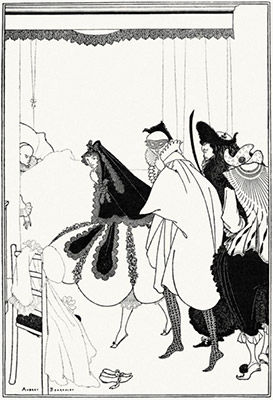
Death of Pierrot - The Savoy
In this illustration of the deathbed of Pierrot the clown for The Savoy magazine in London, Beardsley depicts what he described as "strange hermaphroditic characters wandering about in Pierrot costume." Characteristic of the Decadent notion that life is a performance; here the artist creates a theatrical atmosphere. The death-white face of Pierrot resigned to his bed, his clothes cast aside on a nearby chair, is visited by the lively, tip-toeing characters of Arlecchino, Pantaleone, Il Dottore, and Columbina. The intricately detailed masquerade costumes of these latter figures, their exaggerated posturing, and their attempt to implicate the viewer with their shushing gesture lends a humorous quality to an otherwise solemn scene.
The figure of Pierrot, a sad pantomime clown who pines for love, was popular among the early modernists, and appeared in works by Georges Seurat, Paul Cézanne, Pablo Picasso, and Paul Verlaine, among others. Pierrot was a popular figure for so many because his identity was malleable. For the Decadents, Pierrot represented their disillusionment with Kantean idealism; Symbolists sympathized with his suffering and sensitivity; while others used him in their quests to explore form, line, and color. The downtrodden Pierrot appeared more than once in Beardsley's work, including his illustrations for poet Ernest Dowson's Pierrot of the Minute (1897), in which the clown is obsessively associated with the color white and portrayed as pale, sad, and alone. In this image, the clown displays a poignant knowledge of his own death - a reflection perhaps of the artist's own perceived mortality. Indeed, at the time Beardsley created this, his health was fading. Increasingly bedridden and unable to work, Beardsley suffered from consumption for two more years until he died at age 25.
Illustrated Magazine - The Savoy, 6
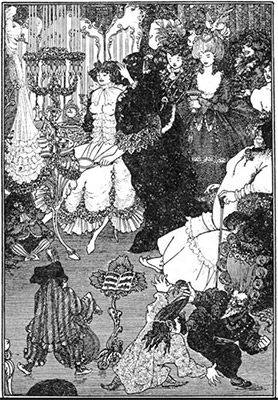
Venus at her Toilette
This illustration appears in Beardsley's own writing, Under the Hill (1896), an erotic novel derived from the legend of Venus and Tannhauser. Initially published in parts by The Savoy, Under the Hill was to be issued in book form, but Beardsley never finished it. Beardsley's rendering depicts a lady's toilette, a private ritual during which a woman primps herself in anticipation of appearing in society. Here, in Venus's court, eroticism and sensuality reign supreme. Beardsley's illustration, so full of hedonistic activities, nicely compliments his almost manic, hyper-stimulating text.
Stylistically distinct from his earlier work, Venus at her Toilette is an intricately detailed composition that relies on line, texture, pattern, and tonal gradation. Gone are the large inked areas or wide blank spaces. Instead, greys offer more tonal variation, while also suggesting a depth missing from his earlier strictly two-dimensional compositions. This characteristic combined with highly decorative patterning to render an erotic subject is typical of Beardsley's later Art Nouveau style. More than an artful illustration and befitting his Symbolist interests, here Beardsley also satirizes Victorian polite society, excessive consumerism, and the veneration of artificial beauty. As such, the image is exemplary of Decadent pessimism that grew out of fin de siecle concerns regarding the economic and authoritative decline of Great Britain.
Illustrated Book - Under the Hill
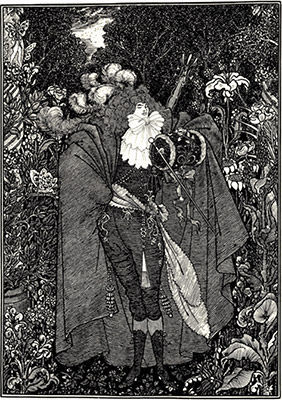
The Abbe
Similar to the Dürer engravings Beardsley admired, The Abbe shows subtle tonal variations between black and white so that pure white portions pop and jet-black areas recede more so than in his earlier illustrations. Originally titled Abbe Aubrey, the central figure appears distorted, not unlike figures in the artist's earlier work. A small head rests atop billowing theatrical clothes. The figure appears inundated by intricately rendered flora that includes a pixy or fairy at top left.
The Victoria and Albert Museum in London suggests that Beardsley's ornate foliage may have been influenced by prints that appeared in the Memoir of Edward Calvert (1893), a copy of which was given to the artist by his friend Robert Ross. Beardsley's own words from Under the Hill brilliantly evoke the atmosphere of his later drawings that showcase an unreal, theatrical, and above all, macabre world: "The place where he stood waved drowsily with strange flowers, heavy with perfume, dripping with odours.... Huge moths, so richly winged they must have banqueted upon tapestries and royal stuffs, slept on the pillars that flanked either side of the gateway, and the eyes of all the moths remained open and were burning and bursting with a mesh of veins." This and other illustrations for Under the Hill firmly established Beardsley's later style as a combination of the Symbolist denial of realism and Art Nouveau's decorative arabesques, with Decadent pessimistic hedonism.
Illustrated Manuscript, Under the Hill - Victoria and Albert Museum
Biography of Aubrey Beardsley
Childhood
Aubrey Vincent Beardsley was an artistic and musical prodigy from an early age. Born to a father who preferred to squander his inheritance rather than adopt a trade, Beardsley's creative prowess helped stave off complete destitution. At age 12 he and his older sister Mabel (who would later become an actress) performed musical duets in a public concert. A witty child with a wicked sense of humor, Beardsley drew caricatures of his grammar school teachers and by age 14 had published his first poem, "The Valiant," as well as a series of sketches titled "The Jubilee Cricket Analysis" in the school's magazine, Past and Present.
From childhood Beardsley's life expectancy was short and uncertain. At the age of seven he contracted tuberculosis, a disease then known as "consumption" because sufferers appeared to waste away. Beardsley's fragile health meant that he was somewhat frail as a boy and often found himself confined to his bed, unable to attend school or play with his peers. The impact of this disease on the artist's childhood was no doubt on his mind when as an adult he created Self-portrait in Bed (1894). The ink drawing depicts a small child nearly swallowed up by the enormous bed that he occupies. An inscription in French at the top left reads: "By the gods not all monsters are in Africa." The quote is as much a reference to his lifelong struggle with tuberculosis as it is indicative of his fascination with the grotesque and macabre.
Beardsley worked briefly as a clerk for an insurance agency after grammar school, all the while developing a portfolio of Pre-Raphaelites-inspired drawings. In 1891, at age 19, Beardsley accompanied his sister to the studio of painter and illustrator Sir Edward Burne-Jones. Although the siblings were initially denied admittance, Burne-Jones's interest was piqued when he noticed Mabel's striking red hair. Beardsley soon built up the courage to show the artist his portfolio. Deeply impressed by the youth's obvious talent and imagination, Burne-Jones recommended Beardsley to the Westminster School of Art. There, Beardsley received instruction from painter Frederick Brown. A consumptive relapse shortly thereafter meant that from then on Beardsley lived on a knife's edge, relishing in a lust for life even as he faced the prospect of an early death.
Early Training
Sir Edward Burne-Jones was not the only one to notice Beardsley. Within a year of enrolling in art school, the young artist received an offer from publisher Joseph Dent to illustrate Sir Thomas Malory's epic, Le Morte D'Arthur (1893). Impressed by the artist's ability, Dent also observed that Beardsley was "a strange boy" and probably "not long for this world." Despite his apparent frailty, Beardsley produced over 300 illustrations within a short time frame. The resulting work blends the classical poses and complex compositions found in Pre-Raphaelite art and the decorative patterning, flat two-dimensionality, and erotica of Japanese Ukiyo-e prints with a Decadent fixation on death and decay.
His illustrations for Le Morte D'Arthur made Beardsley famous and led to his introduction to Oscar Wilde, a provocative author and important figure in the Decadent and Aesthetic movements in England. Deeply influenced by the French Decadent theory of art outlined by Theophile Gautier and exemplified in Charles Baudelaire's Les Fleurs du Mal (1857), Wilde was an outspoken critic of repressive Victorian sensibilities and supported the Aesthetic notion of "art for art's sake." His philosophical novel The Picture of Dorian Gray (1891) plays on these ideas by telling a story about a man, Dorian, who sells his soul for eternal beauty and immortality, but falls into depravity. Wilde, who acknowledged the controversial novel had an autobiographical component, lived his art. His decadent lifestyle and homosexuality shocked prudish Victorian society.
Beardsley's own sexuality is uncertain, but nonetheless aroused feverish public speculation, including accusations of homosexuality, transvestitism, and incest with his sister. A meticulous dresser, Beardsley's neatly pressed morning jacket, fine gloves, and patent leather pumps only fueled rumors, as did his association with Wilde. Punch magazine dubbed Beardsley "Daubrey Wierdsley" and "Awfully Weirdly." The artist's relationship with Wilde, though it initially bolstered his career, quickly became tumultuous and, ultimately cost Beardsley his position as art editor for The Yellow Book, an important Decadent magazine, in 1895.
In 1894, Beardsley, having just met the notorious author, commenced illustrating the English translation of Wilde's Salomé (1894). The resulting work reached new heights of public offence with its erotic, ghoulish, deformed figures, phallic candles, femme fatales, and blood-drinking flowers. Many images were condemned as obscene, or bore no relation to the text. And yet they had such a diabolic beauty that the egotist Wilde began to worry that they might outshine his work. In particular Wilde criticized the Japanese aesthetic in Beardsley's work, which he considered contrary to the Byzantine character of Salomé. The decorative embroidery on Salomé's gown in The Peacock Skirt as well as intricate interlacing floral patterns throughout the book were largely inspired by Whistler's Peacock Room, which Beardsley so greatly admired. Offended by Wilde's critique, Beardsley mocked Wilde in playful caricatures such as Oscar Wilde at Work (1895), which shows the author plagiarizing the Bible, Swinburne, and French Verbs. Wilde retaliated by publicly declaring that he had "invented Aubrey Beardsley" - a preposterous claim noted by journalists.
Victorian society was (not surprisingly) appalled by Salomé. The Art Journal described Beardsley's work as, "terrible in its weirdness and suggestions of horror and wickedness." Seemingly untroubled by his critics and perhaps playing on their anxiety, Beardsley described his imaginative, theatrical, and macabre work as populated by "subjects [which] were quite mad and a little indecent. Strange hermaphroditic figures wandering about in period costumes, quite a new world of my own creation."
Beardsley's talent extended beyond book illustrations to poster designs and magazine editing. In keeping with his interest in theatre, the artist created a poster for the Avenue Theatre that featured the play A Comedy of Sighs (1894). At the time, the world was on the cusp of an advertising revolution. Recognizing this, Beardsley observed in his essay, "The Art of the Hoarding" (1894) that if advertisements were to be unavoidable in modern life, they should be beautiful. The artist foresaw "London... resplendent with advertisements, and, against a leaden sky, sky-signs will trace their formal arabesque. Beauty has laid siege to the city, and telegraph wires shall no longer be the sole joy of our aesthetic perceptions."
Other examples of the beautifully rendered advertisements Beardsley produced could be found in magazines, including The Yellow Book, for which he briefly served as art editor. The quarterly publication featured essays by such giants as H. G. Wells, William Butler Yeats, and Henry James. It mocked Victorian society for censoring sex in art and literature. This sexually repressive Victorian attitude came from both rational (syphilis was rampant) and irrational reasons (they thought masturbation caused physical disorders). In his work for The Yellow Book, Beardsley revealed his adherence to Pre-Raphaelite notions of repressed desire and directly challenged Victorian morals by obscuring the line between art and obscenity.
Mature Period
The Yellow Book was a sell-out, despite being damned by the press as "repulsive" and "insolent." Its name intentionally called to mind yellow paper bound French decadent novels deplored by conservative Victorians. If this blatant association was not enough, within a year of its initial publication, Beardsley, then its art editor, became engulfed in the explosive public scandal of the Oscar Wilde rent boy/libel trials of 1895. The press reported that Wilde, upon being arrested for indecency and sodomy, was led away with a "yellow book" under his arm - a reference to his notorious character Dorian Gray. The public, however, believed the text to be Beardsley's journal of the same name. Public outrage convinced The Yellow Book publisher John Lane to fire Beardsley. Thus, by age 22, the young artist had lost his income and, it seemed, his career and reputation. Perversely, perhaps enjoying his newfound notoriety, Beardsley promptly moved into the very suite in Geneux's Private Hotel that had been named in Wilde's trial.
Beardsley was not unemployed for long. A leading distributor of erotica, Leonard Smithers collaborated with Beardsley to found a rival magazine, The Savoy, in 1896. Smithers also hired the artist to illustrate Alexander Pope's The Rape of the Lock (1896). Unfortunately, that year Beardsley's tuberculosis returned with violent haemorrhaging, so that he was often too ill to create. The work he could achieve was beautifully elegant and intricate. Gone were the jet-black swaths and blank spaces. Now grey tonal variations and delicately rendered details characterized his work. Beardsley's new style was also more explicitly pornographic. He portrayed female sexuality, phalluses, and female masturbation, for example, in Aristophanes' Lysistrata (1896) at a time when women were not believed to experience sexual desire.
Pope's The Rape of the Lock was beautifully bound in turquoise cloth and gold. On seeing it James McNeill Whistler, who had rejected earlier attempts by Beardsley to cultivate a friendship, reduced Beardsley to tears by telling him, "Aubrey, I have made a very great mistake - you are a very great artist." Despite Whistler's accolades, Beardsley's work for Smithers, particularly Lysistrata, was deemed offensive. The publisher was accused of ruining Beardsley's morals and sacrificing his health. But Beardsley would not succumb to his ailment that quickly. Health permitting, Beardsley very much enjoyed the social scene and traveling. During their 1896 trip to Paris, for example, he, Smithers, and the poet Ernest Dowson visited Gabriel de Lautrec in Montmartre and there indulged in a night of hashish and dance halls. When the wine and revelry subsided, the sober Beardsley experienced a change of heart and converted to Roman Catholicism. He promptly wrote to Smithers begging him to destroy all copies of Lysistrata and other obscene works "by all that is holy." Smithers, however, did not comply with his wishes and went on to publish Beardsley's collected work in A Book of Fifty Drawings (1897).
Late Period
The last years of Beardsley's life was spent trying to complete illustrations for Theophile Gautier's Madame Maupin and Ben Jonson's Volpone. Facing death, the artist wanted to leave behind a beautiful and worthy legacy. In a final collaboration with Smithers, the artist managed to create his own book, Under the Hill, for which he wrote the text as well as designed its illustrations. Early portions of this erotic story about Venus and Tannhauser appeared in issues of The Savoy (1896) in a slightly watered-down form. It was not until 1907 that Smithers published the entire manuscript which had been left unfinished at the time of Beardsley's death nearly a decade earlier.
His health deteriorating, Beardsley took up residence on the French Riviera in 1896. Letters to friends show his decline to an inevitable and terrible death. Sometimes he wrote despairingly, "I am literally crying with vexation," and other times in vain hope, "that the end is less near than it seems." In one of his last letters he expressed his regret to die when "such splendid things I had planned." Aubrey Beardsley died at the age of 25 in Menton, France. Like Dorian Gray, he would remain young forever.
The Legacy of Aubrey Beardsley
The Decadent movement, and the Aesthetic movement from which it emerged, paved the way for modern art. Beardsley's work possesses the decorative qualities of Aestheticism as well as the pessimistic hedonism and macabre humor of the Decadents. As such, Dada painter George Grosz noted in 1946 that Beardsley influenced "practically every modern designer after 1900." The artist's designs were particularly important to the development of Art Nouveau. Some other important artists who took note of Beardsley are Wassily Kandinsky, Pablo Picasso and artists of the Glasgow School, such as Charles Rennie Mackintosh. The theatrical beauty of Beardsley's designs were used in the Hollywood production of Salomé in 1921 and Leon Bakst's sets for the Ballets Russes.
Beardsley's work has been regularly re-appreciated in Art Nouveau revivals, particularly during the 1960s in Heinz Edelmann's cartoons for the Beatles' film Yellow Submarine. He was also included in the collage on the Beatles Sgt Pepper album, which suggests his significance as a major influence on the musical group. Beardsley's work continues to shock audiences today. Most recently, in 2007 Beardsley's Cinesias entreating Myrrhina to coition from Lysistrata was exhibited at London's Barbican with access limited to viewers 18 years and older.
Influences and Connections

Useful Resources on Aubrey Beardsley
- Aubrey Beardsley: A BiographyOur PickBy Matthew Sturgis
- Aubrey BeardsleyBy Stephen Calloway
- The Best of Aubrey BeardsleyBy Kenneth Clark
- Beardsley and Victorian Sexual PoliticsOur PickBy Linda Gertner Zatlin
- Aubrey Beardsley's Erotic UniverseBy Derek Stanford
- The Picture of Dorian GrayBy Oscar Wilde
- The Yellow Book - A SelectionOur PickBy Viking Press
- Decadent LondonBy Anthony Clayton
 Ask The Art Story AI
Ask The Art Story AI